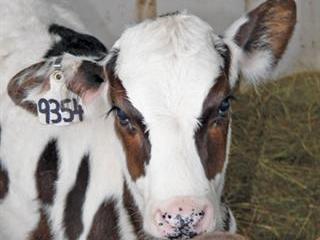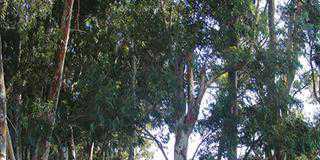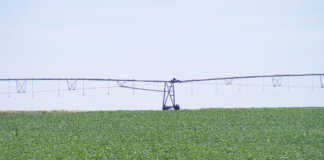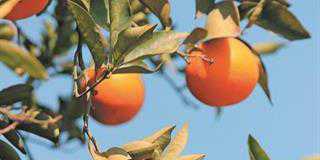
The past 100 years have seen significant changes in perceptions about desirable livestock conformation. Livestock breeders have altered and modified breed characteristics through selective breeding in much the same way as dog breeders have developed domesticated canine breeds from the wolf. Genetic variation in domesticated livestock as in dog breeds, is extensive.
The small picture
Prof Neser says that the best example of progress in selective breeding is evident in today’s turkey and broiler breeds. In 1957, broilers did not grow nearly as large, or as quickly, as they do now. However, he comments that breeding for selected traits has its pitfalls. The modern broiler is a very efficient converter of feed to body mass but is prone to skeletal weaknesses. Turkeys can grow out quickly, but cannot mate naturally and have to be bred by artificial insemination.
“With selective breeding, there is a good chance of undesirable genetic variations manifesting in progeny,” Prof Neser points out. “At one stage in South Africa, cattle breeders aimed to breed animals that looked good in the show ring. Show judges at the time did not take production traits into account and some breeds were virtually destroyed.” Ringside glamour cannot compare to good production when it comes to making a profit, explains Prof Neser.
“Breeding for looks continues to this day. For instance, if a tri-colour Nguni bull walks onto the floor, the bidding is likely to go up because of the animal’s colour even though he may not have good production traits.” Prof Neser says that in the last 10 to 15 years, the conformation of the Dorper sheep in SA has changed from that of a large animal with long legs well suited to the country’s drier areas, into a heavier-muscled, shorter-legged animal.
The Dorper has effectively been modified from an extensive to an intensive breed, less suited to its original arid environment. Fortunately there are still Dorpers in the country adapted to extensive production conditions.
Indices and predictions
“The race for progress, especially in growth traits, was first run using index selection and later by using BLUP (best linear unbiased prediction), which is more accurate than breeding indices. This has led to huge advances. For example, milk production in Holstein dairy cows has increased dramatically during the last 20 years. However, the breed’s average number of lactations dropped to 2,2 and the inter-calving period increased.
This illustrates the worldwide trend of placing too much emphasis on production and not enough on fitness. This narrowed genetic approach does not benefit breeds in the long term. The judicious use of breeding indices and BLUP in sheep such as the Merino has resulted in an animal with finer wool fibre diameter and increased body weight, which has maintained its fleece weight. Prof Neser maintains that this has been achieved by breeders following selection goals.
Too many commercial stock farmers have no idea of their stud breeders’ defined objectives, says Prof Neser, even though this has a direct impact on production.
Livestock genomes
According to Prof Neser, selection for fitness and health traits can be added to selection for production by shifting the focus to include a wider range of traits and suitability. Genomics offers a genetic map of traits inherited from both parents. Genomic evaluation can help producers select the best genetics for their herd while gaining health and viability.
Genes influencing economically important production characteristics such as milk production, marbling, feed conversion, fertility, growth, wool production and fibre thickness can be identified. Changes in the DNA code provide ‘genetic markers’ associated with traits. The marker can be used in breeding programmes as a selection tool.
Prof Neser says as genomics evolves and improves, breeding selection results will become more predictable. Meanwhile, genomics must be used in conjunction with BLUP. “Remember genetic goals are long term. The results of a selection process will take five to 10 years to manifest in your herd, and mistakes made today can take some time to eliminate,” he warns. Prof Neser says that while it is difficult to predict what future animal product markets will demand, it is evident that there is increasing consumer resistance to high food prices.
“Our food is relatively expensive compared to that of many western countries, while our average income is lower.” To accommodate the market, he explains, farmers need environment-adapted animals that can survive on less concentrate in their diets. “As Charles Darwin said ‘ It is not the strongest of the species that survives, nor the most intelligent, it’s the one that is the most adaptable to change’. “In South Africa we have diverse environments to which our livestock must adapt.”
Environmental fitness
SA’s livestock breeders should select for traits best suited to the production environments. Stud breeders must keep the needs of their commercial clients in mind and commercial farmers should buy animals genetically adapted to their specific conditions. Prof Neser says that environmental adaptability can be measured by using the body condition score. Stressed animals will have lower intakes with consequent lower production.
The animal’s tolerance, or lack thereof, to internal and external parasites provides another indicator of fitness for an environment. Prof Neser advises farmers to be aware that fertility, not growth, is the most important trait in selective breeding for suitability to the production environment. Stud breeders and commercial producers should aim for animals with all-round performance stability and commercial farmers should make use of the genetic technology in selection.
Contact Prof Frikkie Neser on 051 401 2387, or email [email protected]













